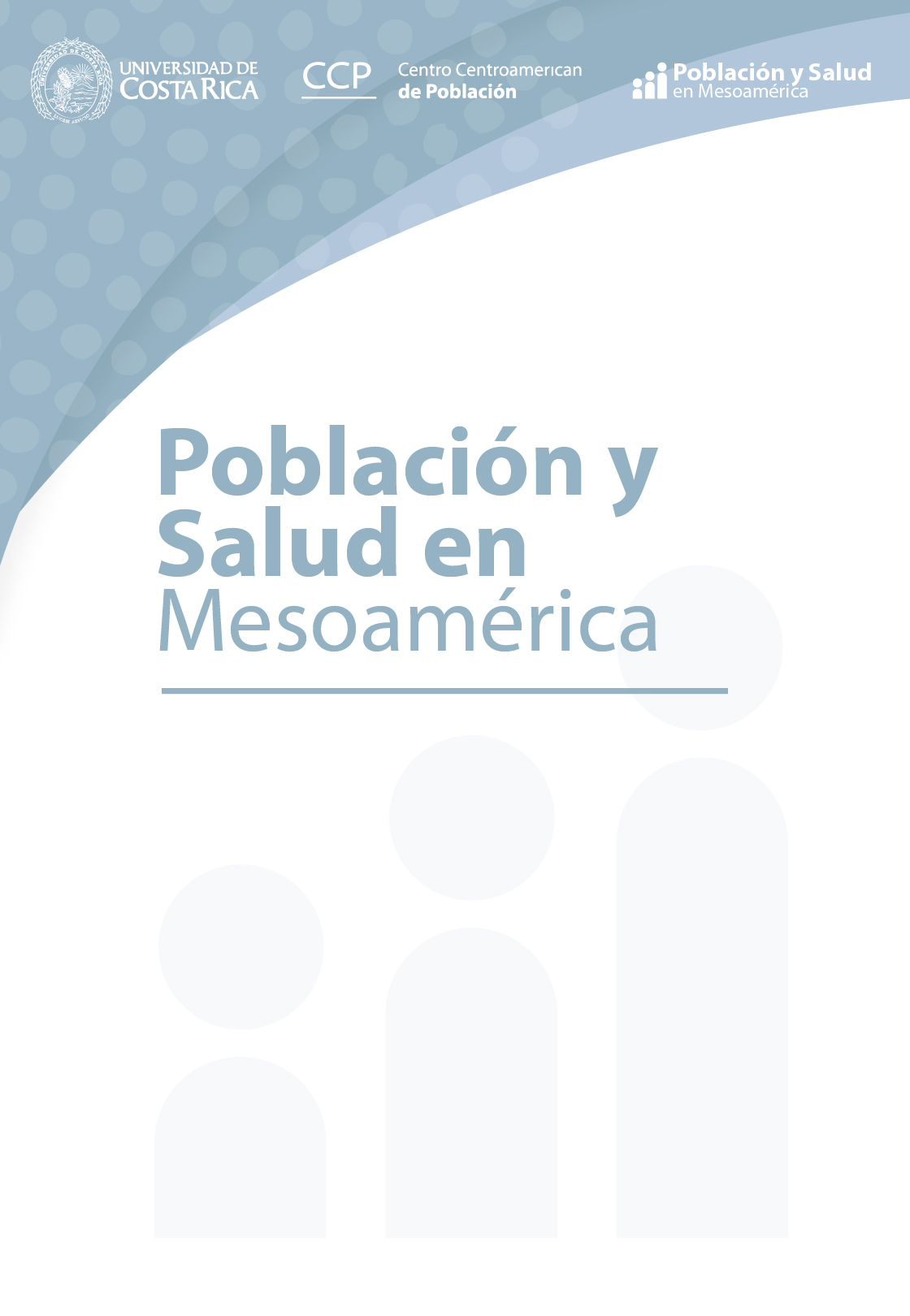Resumen
En esta investigación se caracteriza la migración venezolana hacia Colombia, según sexo, nivel educativo, actividad laboral y por área geográfica de los migrantes y los tiempos de reunificación de los hogares. A partir de los resultados del Censo de Población y Vivienda de Colombia 2018 (CNPV-2018) se analiza el perfil demográfico de los migrantes y se examinan las formas características de reagrupación de los hogares de venezolanos en Colombia en función de los tiempos de migración mediante estimadores de Kaplan-Meier y se utilizan modelos de Cox, los cuales permiten identificar que factores como la edad, el nivel educativo, el año de llegada y la actividad económica son determinantes de dichos tiempos de reunificación. En la investigación se identicó que el aumento de la migración desde Venezuela ha sido determinante en la transición reciente de la estructura de la población colombiana según edad y sexo, al estar concentrado en edades intermedias y con un perfil diferenciado en las principales ciudades. Asimismo, fue posible identificar que el patrón de migración venezolana reciente se puede clasificar como de tipo familiar, con énfasis en edades productivas y reproductivas, y alta presencia de menores de edad y que los vínculos todavía activos con conyuges, hijos y en general parientes que fueron pioneros en el proceso migratorio corresponden a un factor fundamental en las diferencias en las propensiones a migrar por parte de los hogares y sus integrantes.
Citas
Aliaga, F., Flórez de Andrade, A., García, N. y Díaz, F. (2020). La integración de los venezolanos en Colombia: discurso de líderes inmigrantes en Bogotá y Cúcuta. Sociologia, Problemas e Práticas, 94. http://dx.doi.org/10.7458/SPP20209417249.
Arriagada, I. (2007). Familias latinoamericanas: cambiantes, diversas y desiguales. Papeles de Población, 13(53), 9-22. http://www.scielo.org.mx/pdf/pp/v13n53/v13n53a2.pdf.
Bahar, D., Dooley, M. y Huang, C. (2018). Integración de los venezolanos en el mercado laboral colombiano Mitigando costos y maximizando beneficios. Global Economy and Development. https://www.brookings.edu/es/research/integracion-de-los-venezolanos-en-el-mercado-laboral-colombiano/
Bay, G. Cruz, H. Del Popolo, F. González, D. Martínez, J. Rodríguez y J. Silva, A. (2020). Recomendaciones para los censos de población y vivienda en América Latina Revisión 2020. CEPAL -UNFPA.
Bedoya, Y. (2021). Migración laboral en Nuevo León, México 1990-2015. Huellas de la Migración, 5(9), 87-123.
Bloom, D. E., Canning, D. y Sevilla, J. (2003). The demographic dividend: A new perspective on the economic consequences of population change. Rand Corporation.
Borjas, G. J. (1994). The Economics of Immigration. Journal of Economic Literature, 32(4), 1667-1717. https://content.csbs.utah.edu/~philips/soccer2/readings_files/Borjas%20The%20Economics%20of%20Immigration%20%201994.pdf.
Canales, A. (2017). La migración internacional en los modelos neoclásicos. Una perspectiva crítica. Huellas de la Migración, 2(3), 11-36. https://hemeroteca.uaemex.mx/index.php/huellasmigracion/article/view/4527
Castellanos, E., Vega, I. y Cristancho-Fajardo, C. (2022). Envejecimiento y la transición de la estructura poblacional por edades en Colombia. Tendencias, 23(1), 29-57.
Comisión Económica para América Latina y el Caribe. (2008). Transformaciones demográficas y su influencia en el desarrollo en América Latina y el Caribe. Autor.
Cox, D. (1972). Regression models and life‐tables. Journal of the Royal Statistical Society: Series B (Methodological), 34(2), 187-202. http://dx.doi.org/10.1111/j.2517-6161.1972.tb00899.x
De Vos, S. (1987). Latin American Households in Comparative Perspective. Population Studies, 41(3),501-517. http://dx.doi.org/10.1080/0032472031000143026
Díez, A. (2021). El retorno en los movimientos migratorios. Configuración espacial y selectividad migratoria en el departamento del Atlántico (Colombia). Tabula Rasa, (39), 157-190.
Gandini, L., Prieto, V. y Lozano-Ascencio, F. (2020). Nuevas movilidades en América Latina: la migración venezolana en contextos de crisis y las respuestas en la región. Cuadernos geográficos de la Universidad de Granada, 59(3), 103-121. https://doi.org/10.30827/cuadgeo.v59i3.9294
González-Leonardo, M., Recaño, J. y López-Gay, A. (2020). Selectividad migratoria y acumulación regional del capital humano cualificado en España. Investigaciones Regionales – Journal of Regional Research, 2020/2(47), 113-133. https://doi.org/10.38191/iirr-jorr.20.013
Jasso, G. y Rosenzweig, M. (1986) Family Reunification and The Immigration Multiplier: U.S. Immigration Law, Origin-Country Conditions, And The Reproduction of Immigrants. Demography, 23(3), 291-311. https://doi.org/10.2307/2061432.
Kaplan, E. L. y Meier, P. (1958). Nonparametric estimation from incomplete observations. Journal of the American statistical association, 53(282), 457-481. http://dx.doi.org/10.1080/01621459.1958.10501452
Lutz, W. y Samir, K. C. (2011). Global human capital: Integrating education and population. Science, 333(6042), 587-592. https://doi.org/10.1126/science.1206964
Massey, D. (1990). Social Structure, Household Strategies, and the Cumulative Causation of Migration, Population Index, 56(1), 3-26. https://doi.org/10.2307/3644186
Massey, D. S., Arango, J., Hugo, G., Kouaouci, A., Pellegrino, A. y Taylor, J. E. (1993). Theories of international migration: A review and appraisal. Population and Development Review, 19(3) 431-466. https://doi.org/10.2307/2938462
Mazuera‐Arias, R., Albornoz‐Arias, N., Cuberos, M. A., Vivas‐García, M. y Morffe Peraza, M. Á. (2020). Sociodemographic profiles and the causes of regular Venezuelan Emigration. International Migration, 58(5), 164-182. https://doi.org/10.1111/imig.12693
Moyano-Buitrago, M. L. (2021). Inserción laboral de inmigrantes venezolanas, 2014-2019:¿ acumulación de desventajas? Sociedad y Economía, 44. https://doi.org/10.25100/sye.v0i44.10743
Reina, M., Mesa, C. y Ramírez, T. (2018).Elementos para una política pública frente a la crisis de Venezuela. Cuadernos Fedesarrollo, 69. https://www.repository.fedesarrollo.org.co/handle/11445/3716
Saa, I., Novak, M., Morales, A. y Pentland, A. (2020). Looking for a better future: modeling migrant mobility. Applied Network Science, 5(70). https://doi.org/10.1007/s41109-020-00308-9
Sanchez Molina, R. (2004). Cuando los hijos se quedan en El Salvador: Familias transnacionales y reunificación familiar de inmigrantes salvadoreños en Washington D.C. Revista de dialectología y tradiciones populares (RDTP), 59(2), 257-276. http://e-spacio.uned.es/fez/eserv/bibliuned:500383-Articulos-5900/Documento.pdf
Santamaria, J. (2020). ‘When a Stranger Shall Sojourn with Thee’: The Impact of the Venezuelan Exodus on Colombian Labor Markets. University of Minnesota, Department of Applied Economics. http://pseweb.eu/ydepot/seance/514221_Julieth_Santamaria.pdf
Takenaka, A. y Pren, K. (2010). Determinants of Emigration: Comparing Migrants' Selectivity from Peru and Mexico. American Academy of Political and Social Science, 630(1), 178-193. https://doi.org/10.1177/0002716210368109
Zlotnik, H. (1995). Migration and the family: The female perspective. Asian and Pacific Migration Journal,4(2-3), 253-271. https://doi.org/10.1177/011719689500400205
Zulver, J. y Idler, A. (2020). Gendering the border effect: the double impact of Colombian insecurity and the Venezuelan refugee crisis. Third World Quarterly, 41(7), 1122-1140. https://doi.org/10.1080/01436597.2020.1744130
Comentarios

Esta obra está bajo una licencia internacional Creative Commons Atribución-NoComercial-CompartirIgual 4.0.
Derechos de autor 2022 J. Sebastian Ruiz-Santacruz, Elizabeth Castellanos, César Andrés Cristancho Fajardo







